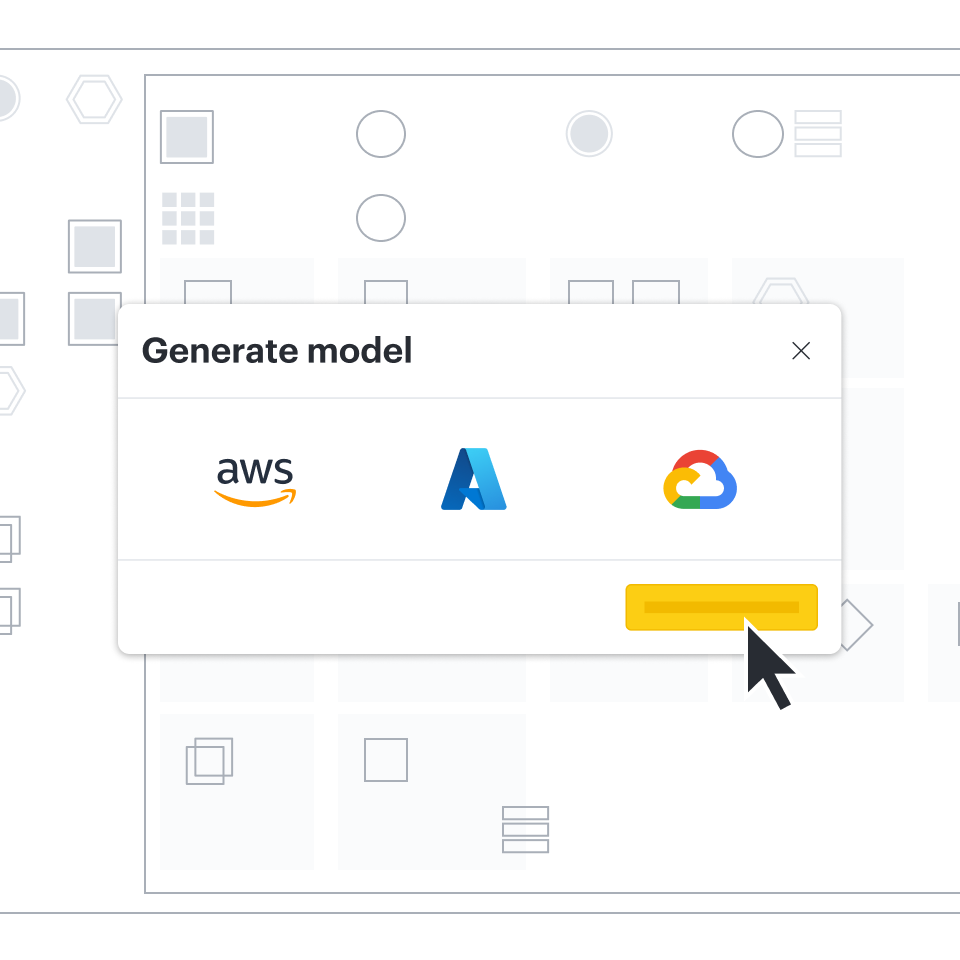A lot of work goes into planning new cloud architecture, and sometimes those who build the architecture aren’t the ones who designed it. Those developing new architecture may misinterpret drawings they’re given or take creative license to make changes they think will be better for the architecture in the long run. Because of this gap between what's designed and what’s built, it’s important to verify that your architecture was built according to the original plan.
3 minute read
How to verify new cloud architecture using Lucidscale
By hand, verifying cloud architecture can be time consuming and tedious. With Lucidscale, it’s simple. Use these three steps:
-
Import your architecture into the Data Hub
Navigate to the left-side panel in Lucidscale and select “Import Data'' to pull in cloud provider metadata and get an accurate picture of your current state. Lucidscale works with AWS, Azure, and Google Cloud.
-
Create new model in Lucidscale
Auto-generate a diagram from your imported data. You’ll be able to apply filters, customize views, show connected resources, and more.

-
Compare new model with original diagram
Compare your new model in Lucidscale with your architecture plan in the diagramming software you use. Lucidchart is a great option for intelligent diagramming, and exporting to Lucidchart from Lucidscale is seamless since both products work together under the Lucid product suite. Use multiple views to filter out specific resources or focus on resource groups. You can also toggle lines on and off to verify that specific resources are connected correctly. If you find any discrepancies, you can highlight them for later reference.

Example
An example of the importance of verifying new architecture can be illustrated by one of our users. We were working with a large airline company to visualize their cloud architecture. They had a team of 50 architects and a lot of cloud environments to manage.
Before using Lucidscale, for new builds, they pulled an established template that had already been approved and made changes as necessary to fit what the new architecture needed. The architecture team then passed the design over to the build team.
At that point, the architects lost sight of the process and didn’t know whether or not there were changes made from the original design. There wasn’t any way for the architecture team to know if something had gone awry.
Ideally, there would have been a feedback loop with the original architect. Most architecture undergoes some changes between the design and implementation stages. A feedback loop can help inform the architect’s future decisions and designs.
This scenario isn’t all that uncommon. Often your team needs to add or change infrastructure to support a new product, feature, or customer base, and the plan for creating that new architecture undergoes iterations. Those iterations may look a lot different than the starting plan. When there is a change to new architecture in the final implementation, typically one of two things happens between the handoff from the architect to the build team.
- Something got changed that shouldn’t be changed. The architect needs to know what was changed so they can make the case to the build team to switch it back to what was intended.
- The original design had flaws, or more likely, the project underwent some revisions or iterations, and the final product needed to look different than the original architecture plan. It’s important for the architect to be looped into these changes as well, so it can inform future decisions. They may even want to update their template to save time on future projects.
Conclusion
Cloud infrastructure can easily grow and change from its original architecture, making it hard to keep track of. In the long run, this can cost your company more than you budgeted and planned for and cause issues with efficiency.
The best way to keep your cloud infrastructure on track is to verify your new cloud architecture from the get-go. Software like Lucidscale makes this easier by generating up-to-date diagrams of your current state and enabling ongoing feedback loops between your architecture and build teams.
